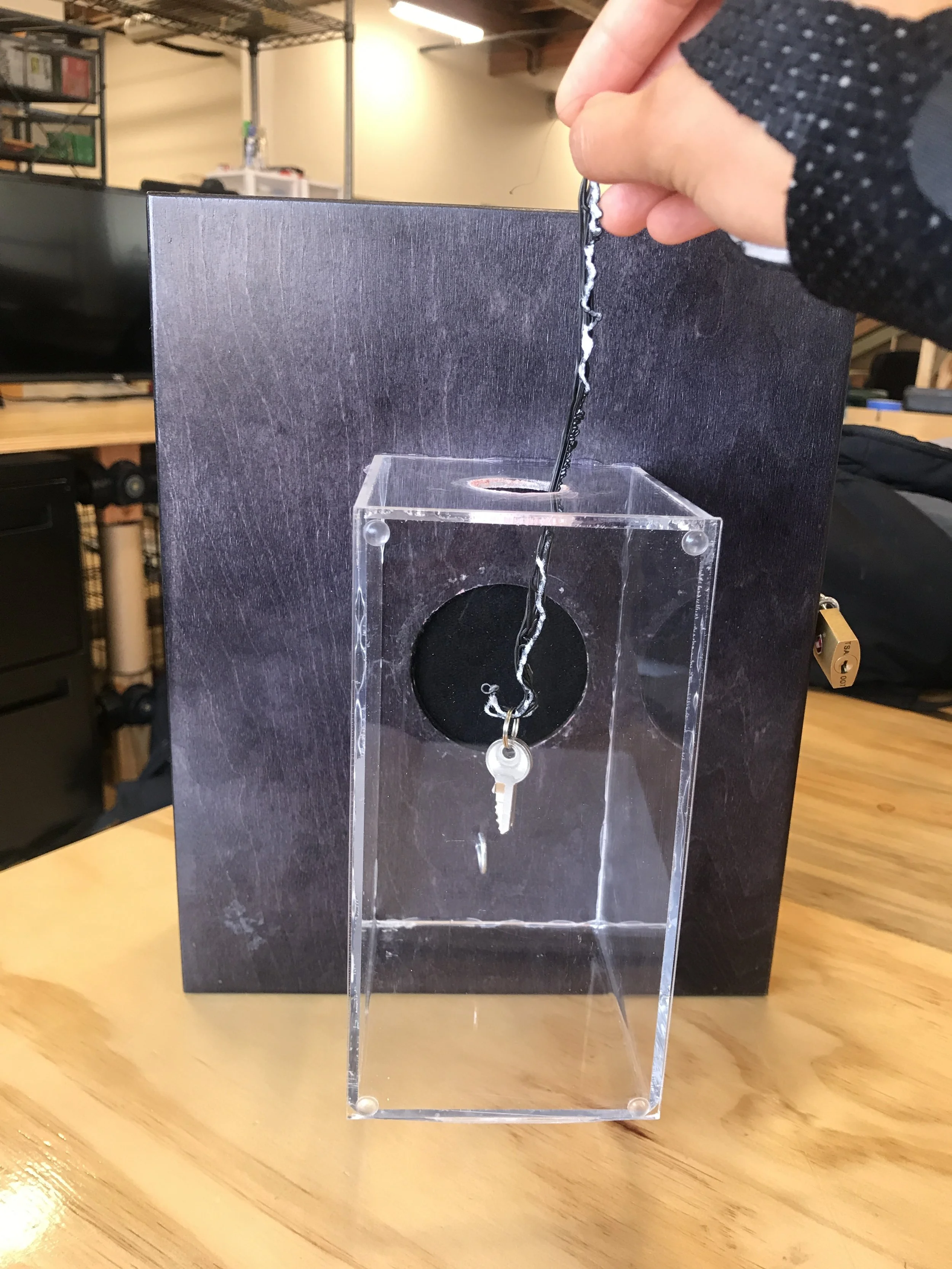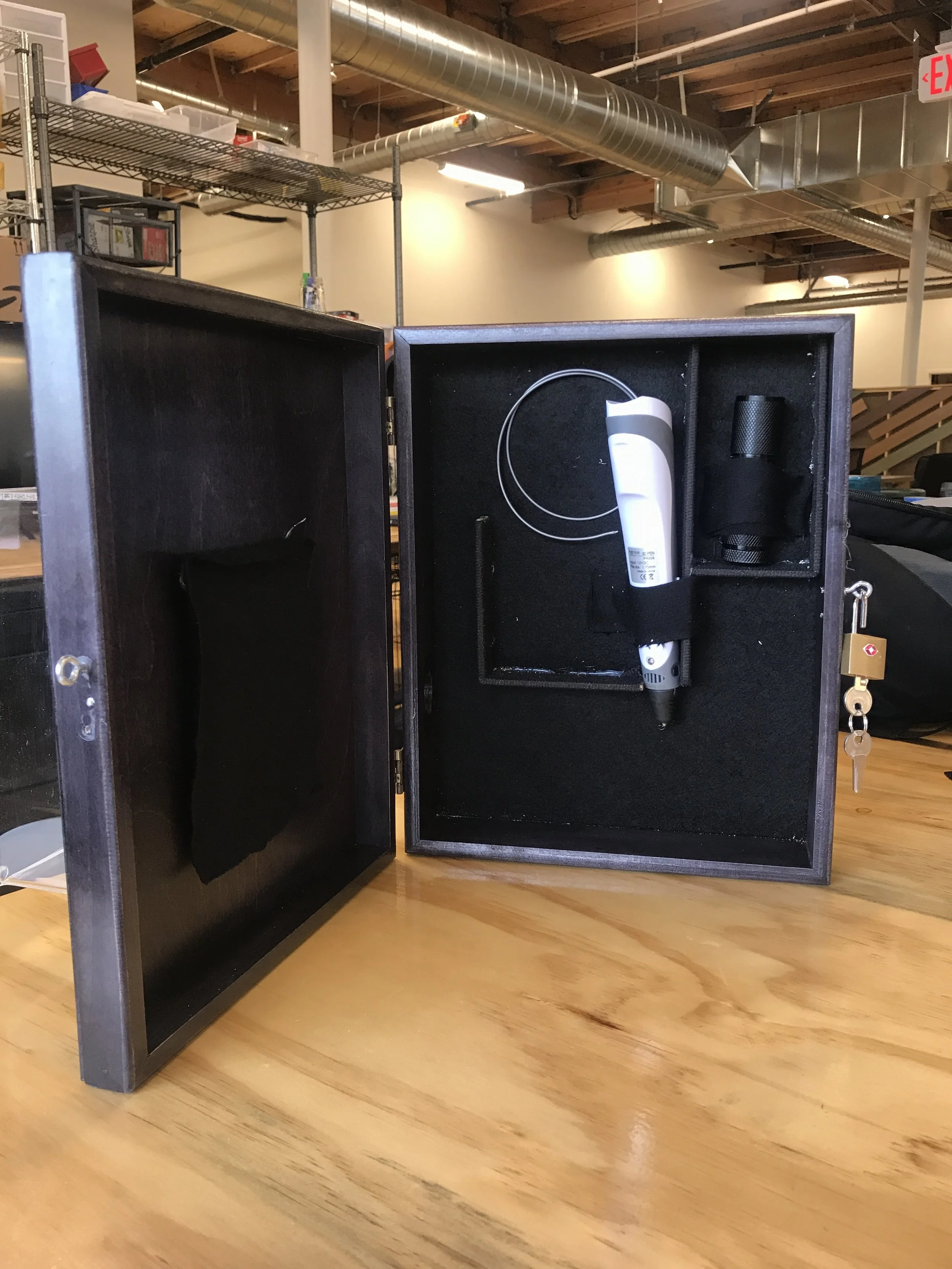Justin Case: License to Print
Client: Two Bit Circus Foundation
Goal: Develop a 15 minute experience for students to practice how to build tools from 3D print pens. The experience should be portable.
Demographic: Middle school students, with the ability to scale up or down.
Pitch: The notorious criminal Jacque DeLuxe has stolen the Venus de Milo’s...arms! You and your team of agents have 15 minutes to unlock his puzzle boxes and recover the arms before he’s released on bail.
Team:
Daryl Choa (Puzzle Designer + Fabricator + Video Producer)
Aubrey Isaacman (Puzzle Designer + Fabricator)
Justin Finuliar (Producer)
Jacob Surovsky (Lead Designer)
Sloane Wysocki (Graphic Designer)
Hannah Yi (Graphic Designer)
Responsibilities: Puzzle design, fabrication, video production, and playtesting.
Platform: 3D Print Pens as tool, fabricated prop items.
Project Summary: Justin Case: License to Print was a 3D print puzzle heist experience designed to teach students how to utilize 3D print pens to build tools. The goal was to get middle school students excited about using the technology and to show the capabilities of 3D printing.
The project originally began as a joint venture between Justin Finuliar and Jacob Surovsky to develop an experience to accompany a 3D print pen curriculum. An early prototype of the experience was playtested at the Two Bit Circus Foundation STEAM Summer Camp run through the Hawthorne School District. Early prototypes showed huge success and engagement with students from ages 10-14.
As a result the project was expanded to the rest of the 2BCF intern team to fully develop for Beta Night, a monthly playtesting night hosted by Two Bit Circus (corporate) at the Microamusement Park.
For the experience, I developed an additional puzzle, fabricated a previously designed puzzle, produced an onboarding video, and ran playtesting at Beta Night.
We delivered a polished prototype that could be brought into classrooms for our final deliverable. We also developed Instructable guides to allow students to recreate the experience.
Puzzle Design: Symbol Box
The original idea had been to use something similar to a verification symbol on money bills. On one side is one symbol, on the other side is another symbol, when the bill is held up to the light, the symbols align to form a number. I wanted to create something similar using the shadow of a 3D printed object.
I envisioned a small box. When the box was opened, a light would turn on and shine upon a symbol printed on the inside top lid. When the 3D printed object (made from another template) was positioned correctly in front of the light, the shadows would create the outlines of an image that represented a four letter word.
This method was difficult to execute without the right materials. Given the limited time frame I decided to 3D print the base of the symbol instead, and to add the template for the corresponding symbol in the beginning onboarding process. This way, guests weren’t held up during the experience by the printing process, but could see that their badge aligned with the symbol when the box was revealed.
During early playtesting with younger students (10-12), we found that we needed to add an additional clue to the inside of the box to show that the symbol was supposed to convert to a 4 letter word.
Puzzle Fabrication: Hook Puzzle
I built a cleaner version of one of the puzzles to make it easier to reset. The original version didn’t have a hole in the back to easily replace the key and remove scraps of plastic filament from previous guests.
Video Production: Onboarding Video
I wrote the script, directed filming, and edited the onboarding video. The purpose of the onboarding video was to provide context information for the experience and to teach guests how to use 3D print pens.
Kate Le, a facilitator for 2BCF, who was trained in acting performed in the video for us, and I worked with my team to create props for the set. During the editing process, I focused on making the video clear, concise, and engaging.
After Beta Night, seeing the drop off in engagement after two minutes, I cut the onboarding video down by 20 seconds and focused on delivery of critical information. I also realized that despite being briefed, guests had to be rebriefed before entering the experience. After playing the video, I would have to reiterate the key plot points necessary for guests to remember before entering the experience.
Playtesting
At Beta Night, I ran playtesting. I was responsible for signing up and onboarding guests. I maintained character as another agent at S.H.H.H. (Spies Hiding Here and Helping), and provided context for the guests’ mission.
We ran 54 guests through our experience over the course of 4 hours. Guests spent 5 minutes during onboarding, an average of 12 minutes to complete the puzzles, and then 5 minutes to debrief.
Overall, our experience was one of the most popular and talked about of the night. We completely booked our experience in the first 20 minutes of the night, and had a waitlist for our waitlist.
Guests were drawn to the originality of the experience and enjoyed making their own tools to unlock the puzzle boxes. However, guests wanted a longer experience and more opportunities to build objects with the 3D print pens.
After playtesting we realized that we needed to provide more positive reinforcement for guests and build with more robust materials.







